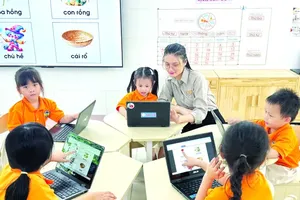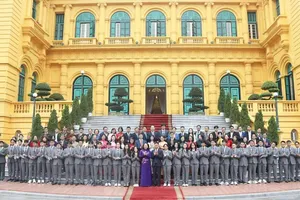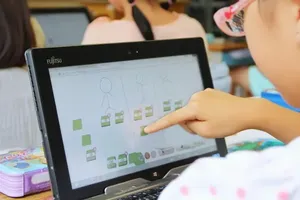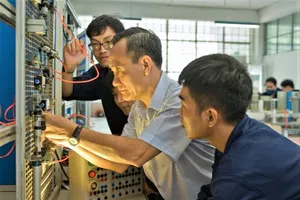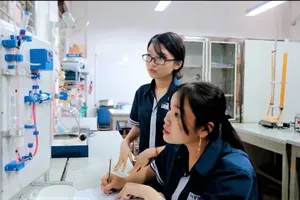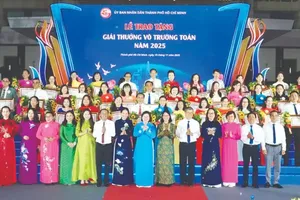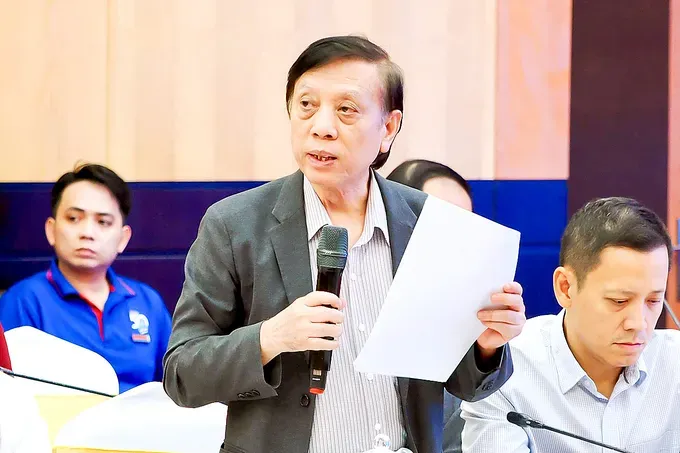
Prof Dr Hoang Van Kiem, Senior IT Advisor of Saigon International University (SIU), commented that AI is fundamentally changing teaching and learning at university level. Teaching once revolved around transmitting knowledge. Today, AI makes knowledge “open, dynamic, and instantaneous,” forcing lecturers to shift from “knowledge transmitters” to “coaches” of critical thinking and creativity.
AI supports this by designing personalized roadmaps, generating real-time content, and saving faculty time on administrative burdens, allowing them to focus on high-level research. This is creating a “lifelong learning with AI” model, where faculty, students, and intelligent systems “co-create” knowledge together.
In the realm of scientific research, AI has emerged as both a powerful creative tool and a “co-author” of new knowledge. It’s profoundly changing the scientific method. Specifically, in fields from medicine and engineering to the social sciences, AI can analyze massive datasets, simulate complex models, optimize hypotheses, and even assist in scientific publication. It’s crucial to remember, however, that AI is just the tool. The researcher must remain the center of creativity, integrity, and scientific ethics.
Therefore, to use AI effectively in Vietnamese higher education, these institutions need to deploy it strategically, methodically, and humanely, with four key areas of focus:
- Building a university-level AI strategy;
- Developing the digital competency of both faculty and students;
- Integrating AI directly into the curriculum;
- Ensuring academic integrity and humanistic values.
At the end of the day, universities must uphold honesty, creativity, and social responsibility in AI, ensuring technology serves people. AI is an opportunity for Vietnamese higher education, if seized correctly. It is necessary to “keep the human fire alive in a world of machines.” By holding onto ethics, emotion, and creativity, AI becomes a companion on humanity’s journey.
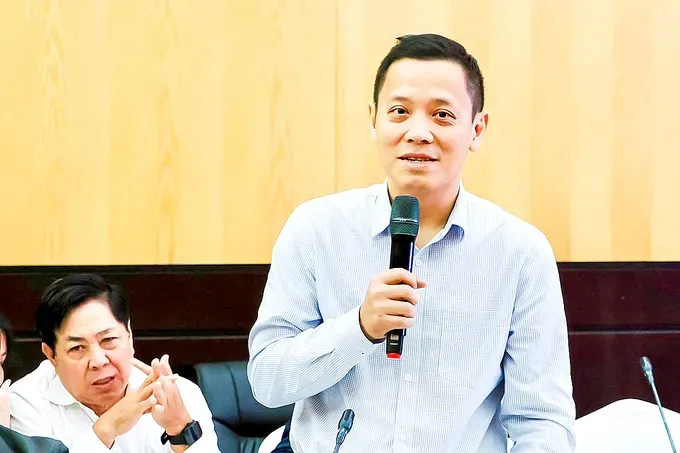
Prof Dr Le Anh Vinh, Director of the Vietnam Institute of Educational Sciences (VNIES), informed the results of a survey on the AI readiness of Vietnamese students, conducted by VNIES in late 2024.
It showed that over 87 percent of secondary school students had at least some understanding of AI. However, a much smaller slice, just 17 percent, reported using AI “very effectively,” while 50 percent said they used it “effectively,” leaving over 30 percent who felt its utility was just “acceptable” or even “ineffective.” The most common hurdles they cited? A lack of knowledge and skills about AI, a lack of equipment, and a lack of guidance from their teachers.
The picture for teachers isn’t perfect, either. The same survey found that 76 percent of teachers reported having used AI in their teaching. But here’s a worrying figure: 30.95 percent of them were “hesitant” or “unsure” about its actual effectiveness, and over 20 percent felt they “lacked confidence” when applying AI in an educational context.
He believes technology currently isn’t solving education’s fundamental problems; it’s mostly solving technology’s problems. For instance, a teacher might use AI to grade, but the student may have no need for it. Both students and teachers use AI tools to save time, but if not used “smartly and for the right purpose,” the application brings no real, practical benefits.
Given this, implementing AI in education must rest on three pillars:
- a consistent policy framework (for ethics, data safety);
- a comprehensive, flexible curriculum;
- the necessary human and financial resources.
Policies must prioritize building AI competency frameworks for students and teachers, provide clear guidelines, and include significant infrastructure investment to narrow the digital divide.

Dr Le Thi Thanh Mai, former Head of the Student Affairs Department (Vietnam National University – HCMC) shared that if it’s not grounded in a foundation of digital ethics, AI can easily slip its orbit, veering from a learning tool into a “virtual fortune-teller.” Conversely, when it’s pointed in the right direction, AI becomes a powerful lever to enhance knowledge, promote creativity, and help train a generation of truly capable digital citizens.
Therefore, the solutions needed in this new digital environment, as outlined in the Politburo’s Resolution No. 71-NQ/TW on August 22, 2025, are these:
- Integrate digital ethics education: This helps students distinguish scientific knowledge from superstition and teaches them to verify information;
- Strengthen psychological support: This is especially true for students in health sciences or those facing intense pressure from exams and job hunting. AI can’t be left to become their “spiritual horoscope”;
- Train a corps of AI-proficient teachers: They need to be skilled not just to teach the subject, but to guide careers, alleviate student pressure, and help personalize the academic tracking of students.
AI is already in the lecture hall. The question is no longer “if” but “how” to use it correctly to become capable and humane digital citizens. And that, really, is the new yardstick for universities to measure themselves against as they work to implement Resolution 71 for the country’s sustainable development.
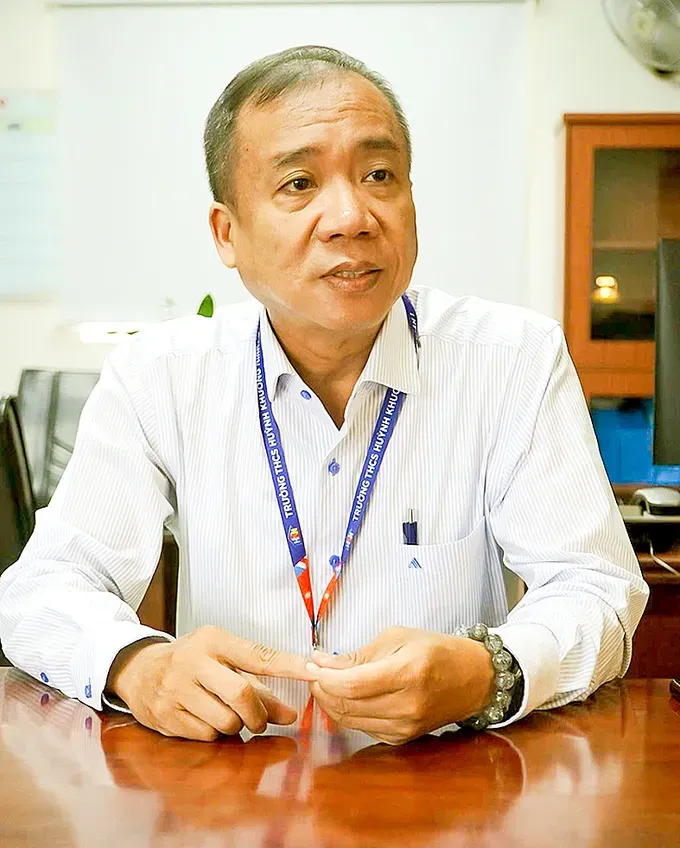
Principal Cao Duc Khoa of Nguyen Du Junior High School in Ben Thanh Ward of HCMC stressed that as the world plunges into an AI boom, Vietnam’s education system faces a new challenge of preparing students to “adapt to and master AI technology.” Being “ready for the AI era” isn’t just about facilities; it’s about building human capacity – teachers, students, and community.
AI is shaping a “digital generation” that’s quicker and more curious. However, they’re also at high risk of being “sucked into the vortex” of technology, lacking guidance and becoming dependent on these tools.
Many students now use apps to find answers or rewrite essays “without a shred of creative thought.” AI blurs the line between “self-study” and “plagiarism.” Students now prefer to ask AI instead of teachers, making the relationship distant. This requires teaching with technology and emotion in parallel.
Schools must build a “digital code of conduct” to ensure AI is used to support learning, not do the learning for them. These rules must define AI’s acceptable scope. “Technology ethics” should be integrated into classes, teaching students that technology is only the means, while the human remains the creative agent.
For schools to be truly ready for the AI era, the following three key factors are needed to make AI a part of a holistic education, not just a tech add-on:
- Clear policies and orientation from the education and propaganda sectors, giving schools the confidence to innovate;
- The “companionship” of technology enterprises, to provide practical tools and solutions for schools;
- The full-throated support of parents and society.


